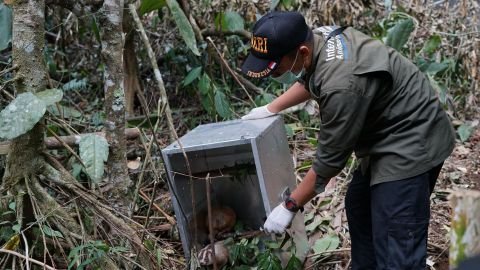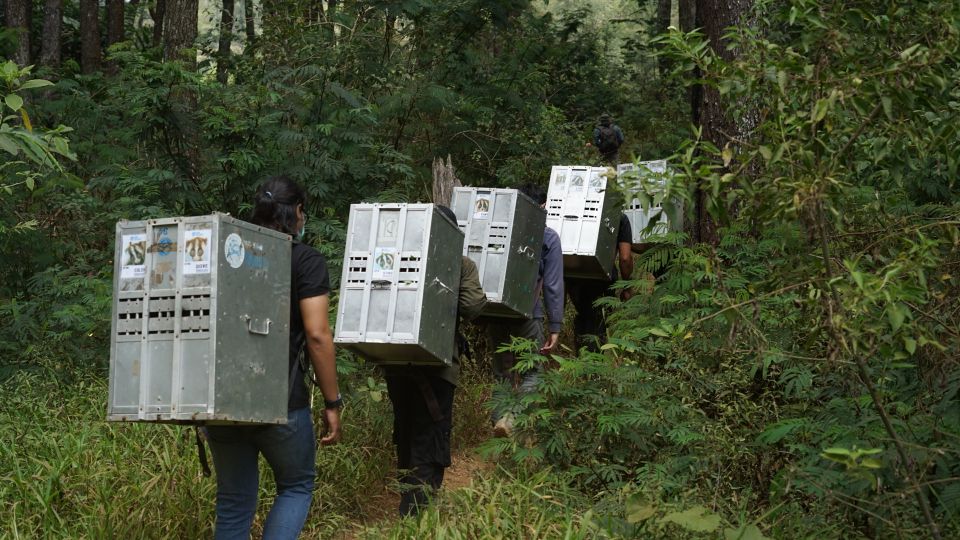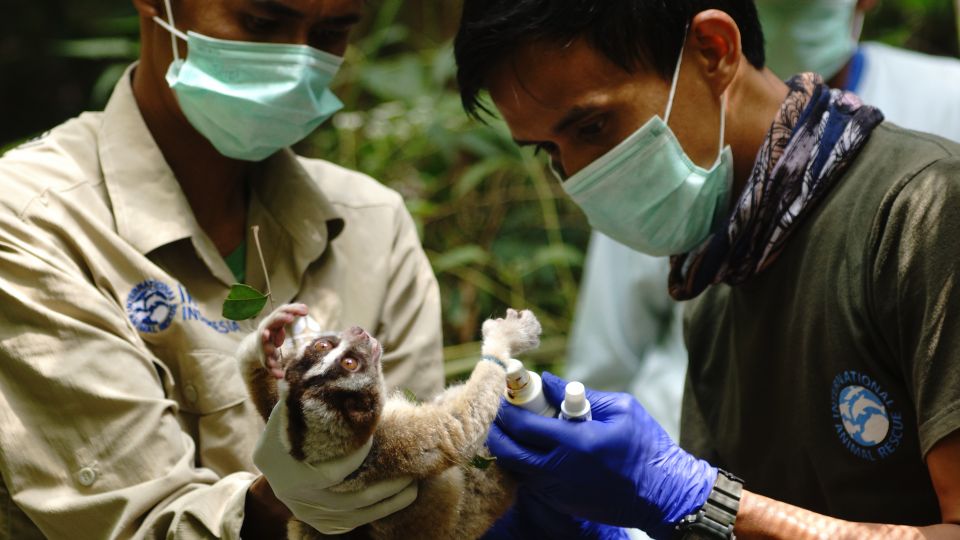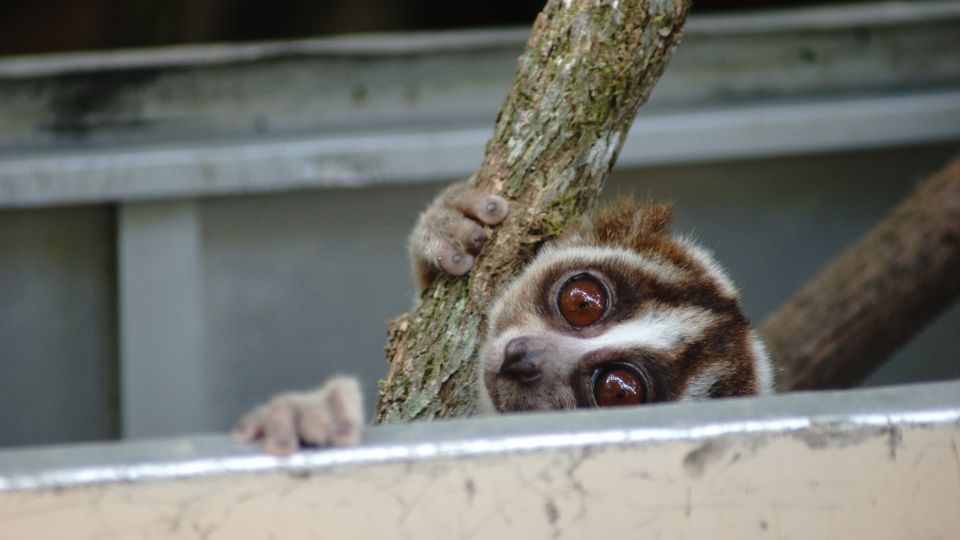
Twenty Javan slow lorises (Nycticebus javanicus) were translocated on Thursday, 30 August 2018, and are currently undergoing habituation at the Masigit-Kareumbi Conservation Forest Area, Bandung, West Java.
The 20 translocated lorises comprise seven males and 13 females. They go by the names; Iik, Colek, Merdeka, Najuna, Airin, Mojang, Jajaka, Haq, Gimbul, Tako, Zwitsal, Dove, Zohri, Yuna, Sari, Itih. In addition, there are two mother-infant pairs, namely Lia-Lio, and Petra-Petri.
The 20 protected primates are former pets and were surrendered by their owners to BBKSDA (The Conservation of Natural Resources Department), West Java, between 2015 and 2018. They were deemed fit for release into their natural habitat after passing a series of medical examinations and undergoing rehabilitation at IAR’s primate centre, situated at the base of Mount Salak in Ciapus, Bogor, West Java.
“They have all undergone a long rehabilitation process involving quarantine, medical examinations, behavioural observations and behavioural enrichment. After being declared healthy, they were ready to be translocated and start habituation in a pre-surveyed location,” said Nur Purba Priambada, IAR medical supervisor, in Bogor, West Java.

Purba explained that the rehabilitation process was carried out to reinforce the lorises’ natural wild behaviours, because when they first arrived at the IAR centre, the condition of the lorises was extremely concerning. Most of them were suffering from stress, trauma and malnutrition which had altered their normal behavioural repertoire. They clearly had not been provided with appropriate treatment and care.
Upon completion of the rehabilitation period, the slow lorises, native to Java, were translocated to the Masigit-Kareumbi Conservation Forest Area in Bandung, where they are housed in open topped habituation enclosures to recover from potential stress caused by transportation and to give them an opportunity to adapt to their new wild environment.

The enclosures are erected in the release site using plastic fibre sheets and nets as the enclosure walls. They enclose a space with a good diversity of trees and plants that provide natural food sources to lorises. The lorises will spend between two and four weeks there until they show signs of adaptation to the new environment.
“While undergoing habituation, the team in the field will continue to observe and record the development of the lorises’ behaviours every night. If, during the habituation period, all the lorises are active and there is no abnormal behaviour, then they can be released into the wild,” Purba added.
Memen Suparman, Head of the Conservation of Natural Resources Department, Region II Soreang, West Java, said the slow loris conservation programme in the Masigit-Kareumbi Conservation Forest Area was a part of the collaboration between BBKSDA West Java and IAR Indonesia.
“This programme is just one of the efforts to support the ongoing ecological processes in the region, as well as maintaining and contributing to the population of endemic primates whose numbers are rapidly declining,” he said.

With an area of approximately 12,420 hectares, Masigit-Kareumbi is a conservation area with a suitable ecosystem for the preservation and protection of slow lorises. A habitat survey by IAR Indonesia and BBKSDA, Region II Soreang team, revealed that this area has good potential in terms of protection and security, availability of food, good canopy cover and water as important components of a habitat.
Memen added: “Not only IAR and BBKSDA teams are involved in this programme. We also involve local communities around the area in the slow loris conservation programme, in activities such as translocation and post-release monitoring. This involvement is a vital part of long-term efforts to protect slow lorises from the various threats they face.”
Robithotul Huda, Programme Manager at IAR Indonesia in Bogor said, slow lorises are one of the many primates that are widely kept as pets. In captivity as pets, many slow lorises eventually die as a result of the torture and compromised welfare they experience from being passed through channels of the illegal trade.
“Based on the economic principles of supply and demand, buying a loris as a pet contributes directly to fuelling the illegal trade. Therefore hunting will continue as long as there is a demand. For this reason, we strongly urge the public never to buy or keep slow lorises as pets, because it is synonymous with exploiting them. “
Huda continued, returning slow lorises to the forest is in fact, not as easy as hunting or capturing them from the wild. It requires a lot of effort and funds to ensure the individuals are suitable to be released into their natural habitat. The process and stages are also time intensive and have to be in accordance with strict operational procedures. In addition, habitat assessment at release sites, habituation, post-release monitoring to ensure adaptation and long-term survival, are processes that must be followed rigorously to give the lorises the best chance of thriving back in the forest.

